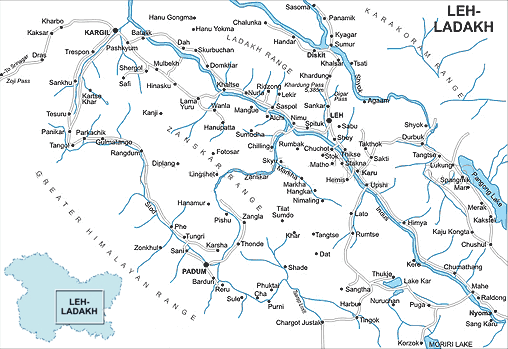THE MAKING
Ladakh is a land that has always fascinated me. At first
it was the photographs I saw in travel magazines that blew
me away. The photos imparted impressions of a fabulous
wilderness of mountain and desert. Then, when I read deeper,
I learned of Ladakh’s Tibetan history and its connection to the
Dalai Lama. The Dalai Lama and his people have always fascinated me.
It was a combination of the plight of the Tibetan people and the beauty
of
their land that inspired the book, Ladakh Adventure.
The Snow Leopard casts a spell on anyone who reads about it. I first
read about the animal in Peter Matthiessen's classic book, 'The
Snow Leopard'. I remember picking up the book in Nepal when I trekked
to 'Everest Base Camp'; as a youngster. By the time I finished
the book I promised myself that I would search for this creature of
legend one day. Many years later, while researching my story, 'Ranthambore
Adventure', I met Joanna Van Gruissen. She put me on to her husband,
Dr. Raghu Chundawat, who was studying snow leopards in Ladakh
at that time. And so, one sunny Ladakhi summer, I set out with
Raghu and his colleagues on an expedition to the Rumbak Valley to
search for the magnificent leopard of the Himalaya.
GEOGRAPHY of Ladakh

Ladakh is the land beyond the Himalaya. It lies on the Tibetan Plateau,
also referred to as the 'Roof of the World'. The Tibetans call their
plateau, the Changthang, which means the 'northern plain' in their
language.
The Changthang, and most of Ladakh, is largely a desert. This is because
the Himalayas, the tallest mountains in the world, are a formidable
geographical barrier. They halt the monsoon clouds that sweep across
India, not allowing them to cross to the Changthang. So Ladakh is
a desert; although it isn't a desert in the traditional sense, in
that it isn't hot and the sun doesn't fry you to death. Instead Ladakh
is quite the opposite. It is a cold, frozen desert.
The people of Ladakh survive by living in valleys where water sourced
from snow melt from Himalayan Glaciers flow. Also, the river Indus
flows through Ladakh ensuring that water is available year-round.





